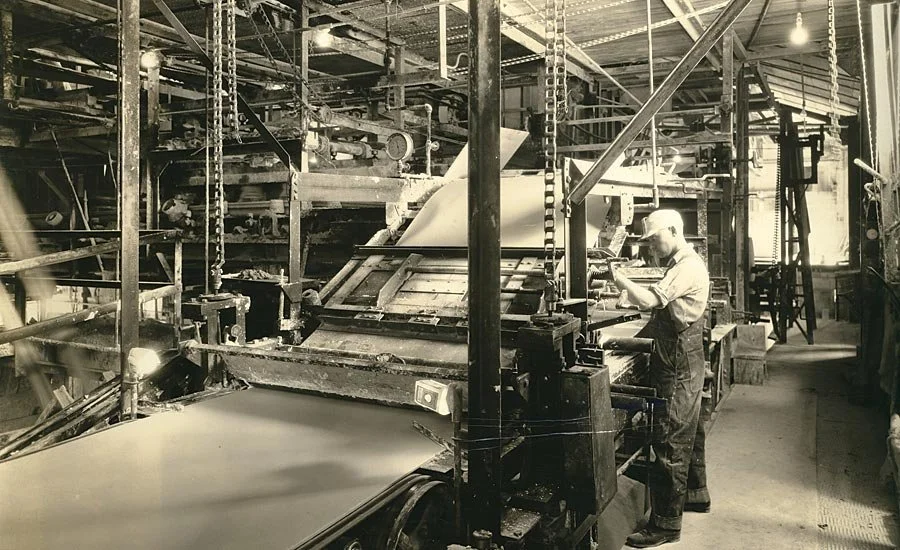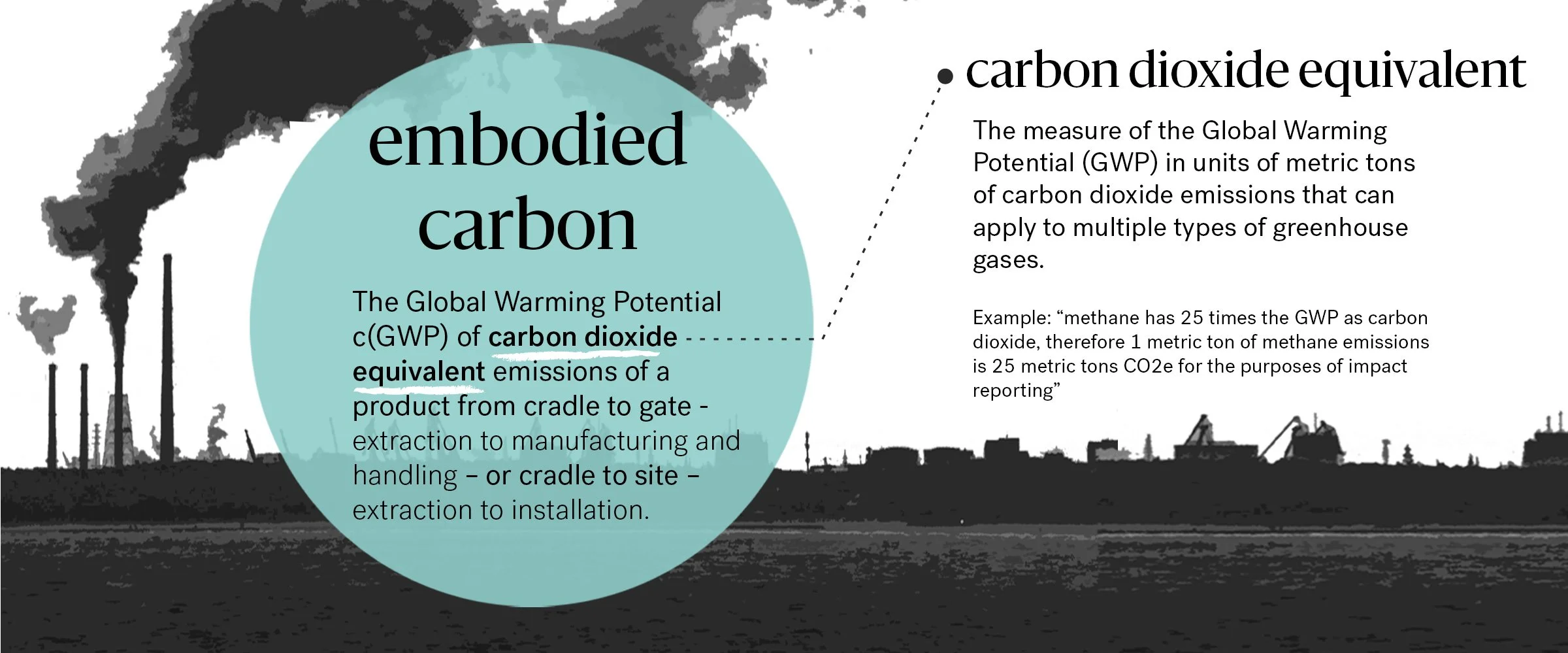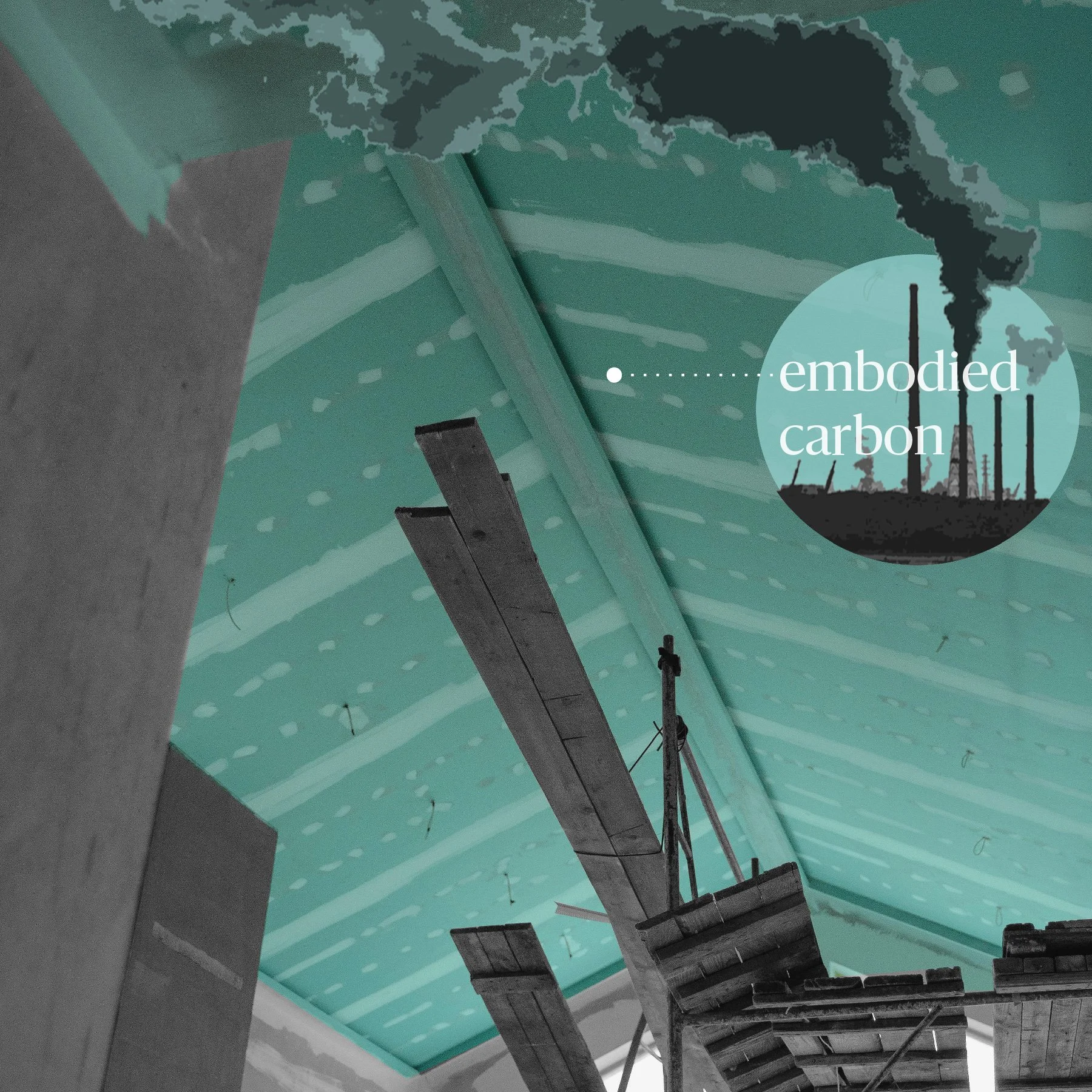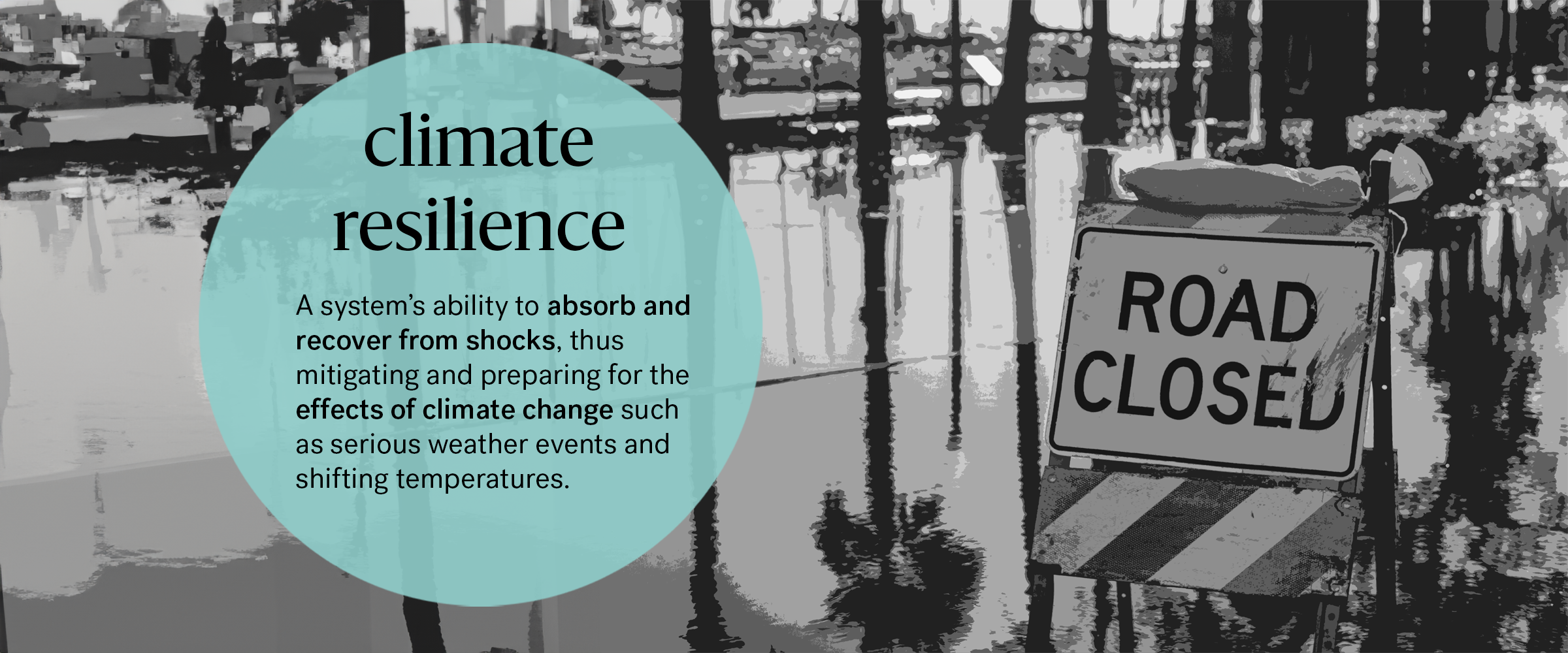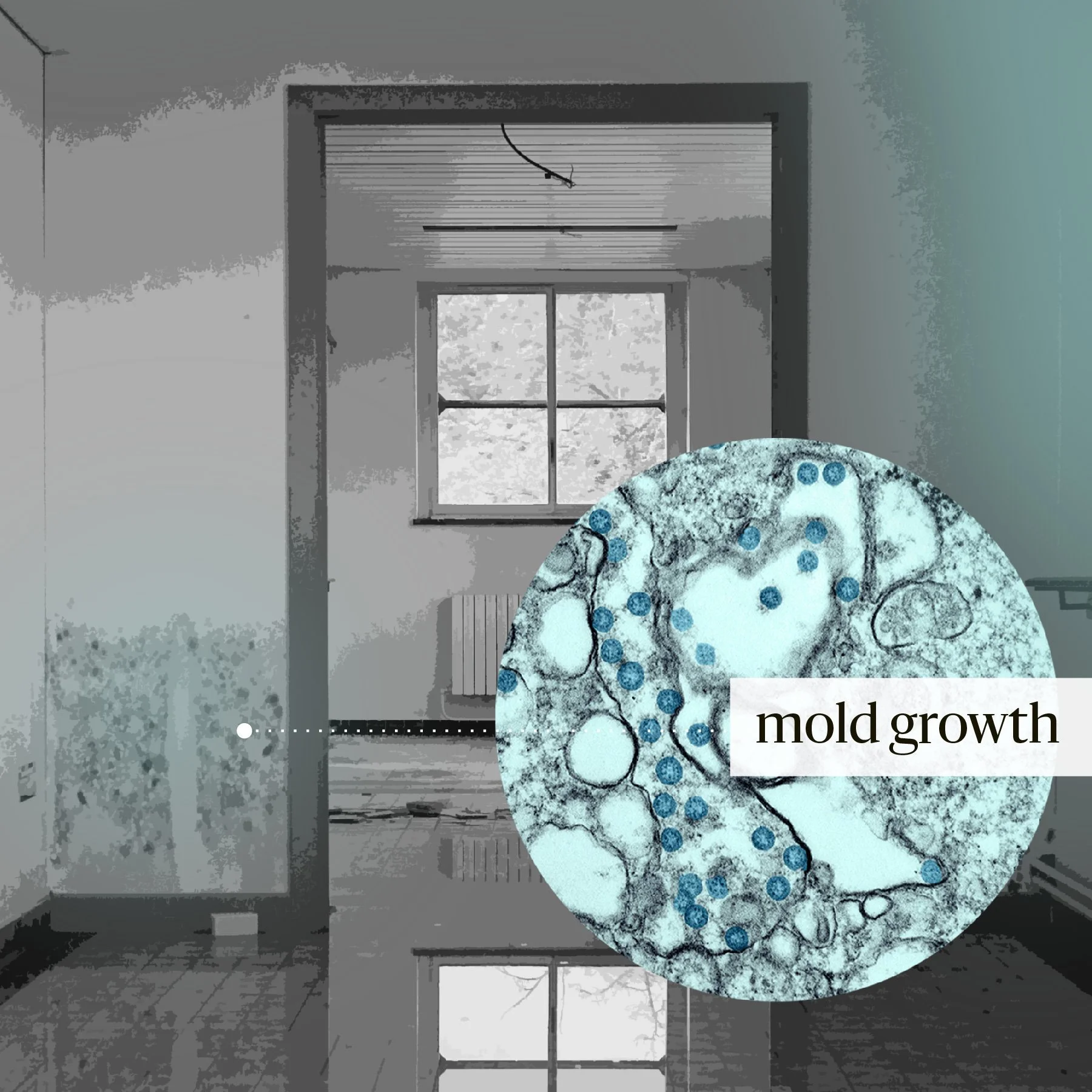Material Spotlight: Gypsum Wallboard

This blog post will trace how gypsum board became commonplace in construction and the resulting environmental impacts throughout the material’s life cycle. It will examine factors of embodied carbon, climate resilience and pollution. The goal is to discover how materials shape our contribution to climate change and ways we as designers can respond in our practice for a more resilient, sustainable future.
What could be more innocuous than a natural mineral sandwiched between two pieces of paper? The reality is that gypsum board can have consequential environmental effects across its life cycle.
Can you imagine a building today without drywall? Not long ago, gypsum board was seen as a cheap, unfavorable alternative construction material. However, this all changed in the boom of new construction following World War II, making gypsum board the commonplace material we know today.
Until the late 19th century, the dominant interior finish for walls was plaster and lath construction. Plaster is made from gypsum, a natural mineral composed of calcium, sulfur, hydrogen and oxygen. It is found in abundant deposits below the Earth’s surface that are mined throughout the world.[1] In this construction technique, thin strips of wood are nailed over studs and covered in layers of plaster. While this was a very popular method, it required skilled application and lengthened schedules by necessitating that the plaster dried on site.
In 1894, Augustine Sackett sought to streamline this process with the invention of gypsum wallboard, initially called “Sackett Board.” By essentially prefabricating plastered walls, this ancestor to gypsum wallboard quickened construction schedules by eliminating the drying time.
Known today by the synonyms of sheetrock, drywall, and plasterboard, gypsum board is made when a gypsum-based mud or “slurry” is mixed and spread between two layers of paperboard.[2] As this slurry dries, the mineral recrystallizes and bonds with the paper lining, forming a standardized-sized material.[3]
However, gypsum wallboard was not an overnight success.
Many builders and homeowners remained skeptical, viewing the material as a cheap and inferior alternative to plaster and lath for several decades.
It was the baby boom following the Second World War that changed the landscape of American construction. Journalist Haniya Rae explains, “Between 1946 and 1960, more than 21 million new homes were built nationwide for the tens of millions of additional babies.”[4] All these houses had to go up quickly, and drywall was the solution. Today, the average sized newly built American home uses over 6,000 square feet of drywall.[5] This translates to one new home using 7 metric tons of gypsum.[6]
Unfortunately, all this consumption comes at an environmental cost.
These range across the life cycle of the product, with embodied carbon emissions during manufacturing, poor climate resilience in its use phase and pollution as the boards decompose.
Embodied Carbon
The building industry creates carbon emissions in two forms: Embodied and Operational. Operational carbon refers to the emissions released during a building’s use phase. Although initially higher, as energy grids become cleaner and building systems become more optimized, operational carbon is reducing. However, embodied carbon is “locked in” at the time of a material’s production; it refers to the significant emissions generated through the process of extraction, transportation and manufacturing.
Manufacturing
Somewhat surprisingly, the first climate consequence of gypsum board is its significant embodied carbon. Often, structural materials are the first thought for embodied carbon, both because of the volume needed and the manufacturing processes. But thin gypsum board doesn’t obviously seem like a material generating high emissions. However, according to Architecture 2030’s Carbon Smart Materials Palette, gypsum board is listed with concrete, steel and carpet as the materials with the most impactful embodied carbon.[7]
Several key factors about the manufacturing process and life cycle of gypsum board make it a major contributor to carbon emissions. While some of these emissions are associated with extraction and transportation, the vast majority are created during manufacturing.[8] The industry-average Environmental Product Declaration (EPD) reveals that every 1,000 square feet of gypsum wallboard has an embodied carbon of 317.4 kg.[9]
The process of manufacturing gypsum board is energy intensive because of the heating cycles and water usage. First, the raw mineral must be heat-dried, then mixed with water and other additives to form the slurry, and finally heat-dried again to attach properly to the paper facing. All this requires energy - which presently requires fossil fuels - which in turn changes the climate due to the release of greenhouse gases.
Life Cycle
Another key factor in gypsum board’s contribution to embodied carbon emissions is the nature of its life cycle. Not all the materials present when a building opens remain installed for the life of the building. Although gypsum board can have a useful lifespan of 50 years, it is commonly removed and replaced during renovations while other high embodied carbon materials, like structural concrete or steel, are not. A typical commercial lease ranges from 5 to 10 years. When tenants change, they almost always renovate the building in some way, and some of the easiest things to change are the walls.
Gypsum board recycling is available in a few regions but not in most, and so most gypsum board removed in a renovation goes straight to landfill, to be replaced by newly manufactured material.
Climate Resilience
Drywall has environmental repercussions beyond just carbon emissions. It can also aggravate the environmental impact associated with climate disasters due to the material’s inherent durability issues with water.
Definition from NASA Earth Science Applied Sciences Climate & Resilience
The weakness of gypsum board to a building’s climate resilience was made clear in post-Katrina New Orleans. Hurricane Katrina was the worst U.S. instance of climate necessitated migration and displacement since the 1930s Dust Bowl. The Army Corps of Engineers estimated that at least 160,000 homes in New Orleans flooded, many of which remained submerged for over 2 weeks.[10]
Use Phase
When drywall—especially paper-clad drywall—gets wet, it very quickly starts to support mold growth, which grows faster in warm, humid environments. Among the homes that survived the initial storm and flooding of Hurricane Katrina, many were still ultimately torn down because the mold growth in the walls was too severe.[11] In addition, many homeowners faced extremely high prices in trying to rebuild their homes following the disaster.
Louisiana’s Road Home program provided grants to residents to encourage them to stay and rebuild.
Grants were often limited to the market value of the home before the storm hit, but that market value was often less than the cost to repair severely damaged buildings. Homes in poorer neighborhoods and those with a higher percentage of Black residents typically had lower market values, so these received the smallest grants, while homeowners in wealthier, whiter neighborhoods received larger grants. This exacerbated problems of homelessness and displacement that the city has grappled with in the years following the disaster.
Problems with gypsum board further hindered the city’s recovery from Katrina when it presented issues in newly repaired or rebuilt homes. The construction market received a large import of China-sourced drywall around the time of the hurricane, which was quickly used to start rehabilitating the damaged neighborhoods. However, many residents found the boards started to corrode metal and smell like sulfur soon after installation.[12] It is suspected that the products were made of synthetic gypsum that are regulated to different standards outside of the US and ultimately endured a chemical reaction within the homes.[13] Many people found themselves having to tear out all the new construction and pay to redo it.
Mold is often put in the category of nuisance; something we have a handle on remediating. However, its health impacts can be serious. When Hurricane Ida rolled through New Orleans in 2021, residents with health issues like epilepsy and autoimmune conditions suffered serious medical complications trying to return to their homes mere days after the storm because of mold growth in the drywall.[14]
According to researcher Danielle Baussan, “The best way to prevent climate displacement is to increase climate resilience.”[15] As the risk of displacement from catastrophic climatic events has increased by 60% globally since the 1970s, we need to start reevaluating our expectations and requirements surrounding material performance to increase our climate resilience.[16] Since we know that these extreme weather events will only increase in frequency and severity, especially in vulnerable areas such as coastal regions like New Orleans, it makes sense to favor materials that are inherently durable and water resistant.
Pollution
Landfills
Currently most drywall ends up in a landfill, where it can contribute to pollution. The decomposition process of gypsum board off-gases hydrogen sulfide, which smells like rotten eggs and can be lethal to humans in large enough quantities.[17] If it escapes the enclosures of landfills, this hydrogen sulfide pollutes waterways and increases acidity levels, harming marine life.[18]
Surprisingly, a significant amount of gypsum board in landfills doesn’t come from demolition, but from installation scraps. According to research from Architecture 2030, “It is estimated that 300,000 metric tons per year of gypsum board waste from new construction alone are generated as a result of over-ordering, incorrect specification, damage, and off-cuts during construction.”[19] This highlights the impact of designing projects to typical panel modules. With this extra consideration, we can minimize off-cuts and reduce waste, save money, and minimize negative environmental impacts.
Recycling Initiatives
Gypsum board recycling is not inherently difficult and can greatly improve the issues raised of high embodied carbon and end-of-life pollution. However, due to a lack of infrastructure and economic incentive, recycling practices are limited to a few regions.[20] However, motivation is growing. Amanda Kaminsky is focused on redirecting gypsum scraps into recycling systems through her organization, Building Product Ecosystems. Through the Closed Loop Wallboard Collaborative, they identify recycling facilities that teams can reroute their waste to.[21] An interactive map of U.S. gypsum board recycling facilities is found here on their website.
Further, the United States Gypsum Co. (USG), one of the major suppliers, operates some recycling facilities and has stated an intention to improve this process with the goal of reducing their reliance on gypsum mines for raw material sourcing.[22]
How Designers Can Make Change
There are several strategies that designers can take to respond to the issues raised around the manufacturing, use and disposal of gypsum wallboard. The following nine action items range from simple substitutions to considering new design solutions. They are intended to be suggestions for impactful changes and used as applicable for projects.
Select Lower Carbon Options:
1. Lightweight Gypsum Board
In comparison with standard gypsum board, lightweight options have lowered embodied carbon since they use less material, which in turn reduces the volume that is potentially sent to a landfill during construction or at demolition.
2. High Post-Consumer Recycled Content
By selecting gypsum board options that have a high post-consumer recycled content, the product’s embodied carbon is reduced and issues of pollution at end-of-life are avoided.
Be cautious of pre-consumer recycled content, as it often means that synthetic or flue gas desulfurization (FGD) gypsum was used, which is linked to mercury pollution during manufacturing.[23]
Account for Inherent Material Properties:
3. Glass-faced Gypsum Board
Paper is the primary food source for mold when gypsum board is exposed to moisture. By opting for glass-facing, the material becomes water resistant and more climate resilient.
Paper-faced gypsum board can also be mold resistant with the addition of antimicrobial chemicals. However, these chemicals are shown to be endocrine disruptors and can contribute to microbial resistance, so consider other solutions first.[24]
4. Design to the Module Dimension
By reducing the cut-off waste generated in construction through this design consideration, less gypsum board would be sent to the landfill, lessening pollution issues.
Consider Different Practices:
5. Masonry or Cement Board for Certain Cases
In cases of severe or recurrent flood risks, masonry and cement board are more resilient options. However, be mindful of design implications and cement board’s higher embodied carbon when considering these alternatives.
6. Modular Wall Systems
For interior walls, explore how modular wall systems could replace gypsum clad walls. The advantages of these systems are that they are more durable and easily deconstructed to be reused or recycled. DIRTT is one example of modular wall systems.
7. Explore Alternative Cladding
There may be certain projects that allow you to explore using wood or wood-based panels instead of gypsum board, which has positive impacts on embodied carbon and pollution concerns.
8. Flood Risk Mitigation
Utilize design decisions that account for gypsum board’s weakness when exposed to moisture. For instance, if the building site has a known flood risk, can strategies such swales be implemented on site to reduce the likelihood the building would flood? Citing the risks associated with mold growth in gypsum board discussed in this article can help validate intentional climate resilient strategies, improving a building’s performance overall.
9. Write Gypsum Recycling into Your Specs
When possible, write a requirement into your specs that gypsum board waste will be routed to recycling facilities during construction or demolition. In addition to the immediate benefits, doing so also helps to signal a demand for increased recycling to the industry. Refer to the Closed Loop Wallboard Collaborative resources and interactive map for help in identifying if there is a recycling facility nearby.
The most important step is to bring these considerations around materials into conversation with your design team. However, it can be difficult to start and guide a discussion about which materials to focus on and what impact they have. To help with this, we have developed a discussion and resource guide that prompts focused questions and includes the information necessary to know what to research further.
Consider continuing this discussion in your teams with the support of this resource:
“When You Can’t Go Home,” Danielle Baussan
Carbon Smart Materials Palette
Closed Loop Wallboard Collaborative, Building Product Ecosystem
“Embodied Carbon and Material Health in Gypsum Drywall and Flooring,” Perkins&Will Research
Works Cited
[1] Editors of Encyclopædia Britannica, “Gypsum,” Encyclopædia Britannica, May 22, 2024, https://www.britannica.com/science/gypsum.
[2] “Making Gypsum Board,” Gypsum Association, June 2, 2023, https://gypsum.org/making-gypsum-board/.
[3] “Making Gypsum Board,” Gypsum Association.
[4] Haniya Rae, “An Exciting History of Drywall,” The Atlantic, July 29, 2016, https://www.theatlantic.com/technology/archive/2016/07/an-exciting-history-of-drywall/493502/.
[5] “Augustine Sackett,” National Inventors Hall of Fame, accessed September 11, 2024, https://www.invent.org/inductees/augustine-sackett.
[6] Robert Crangle, “Gypsum Statistics and Information,” Gypsum Statistics and Information | U.S. Geological Survey, accessed September 12, 2024, https://www.usgs.gov/centers/national-minerals-information-center/gypsum-statistics-and-information#:~:text=Most%20gypsum%20in%20the%20United,metric%20tons%20of%20gypsum%20alone.
[7] Kate Simonen et al., “High-Impact Materials,” Carbon Smart Materials Palette, September 18, 2023, https://www.materialspalette.org/palette/.
[8] Teresa McGrath et al., “Embodied Carbon and Material Health in Gypsum Drywall and Flooring,” Issuu, May 9, 2022, https://issuu.com/perkinswill/docs/white-paper_carbon-health_final.
[9] Thomas P. Gloria, “North American Gypsum Boards: Typical (5/8” Type X),” Environmental Product Declaration, May 13, 2014, https://www.gypsum.org/wp-content/uploads/2013/12/Gypsum-2014-FINAL-May-13-.pdf.
[10] Hayden Alfano, “Construction Industry at the Eye of Katrina’s Aftermath | Remodeling,” Remodeling by JLC, September 30, 2005, https://www.remodeling.hw.net/business/construction/construction-industry-at-the-eye-of-katrinas-aftermath.
[11] Haniya Rae, “An Exciting History of Drywall,” The Atlantic, July 29, 2016, https://www.theatlantic.com/technology/archive/2016/07/an-exciting-history-of-drywall/493502/.
[12] Cain Burdeau, “Latest Katrina Disaster: Tainted Chinese Drywall,” The Seattle Times, April 13, 2009, https://www.seattletimes.com/nation-world/latest-katrina-disaster-tainted-chinese-drywall/.
[13] Cain Burdeau, “Latest Katrina Disaster: Tainted Chinese Drywall.”
[14] Emily Woodruff, “After Hurricane, Mold Can Quickly Take Hold of Home and Health: ‘I Don’t Wish This on Anyone,’” NOLA.com, September 25, 2021, https://www.nola.com/news/hurricane/after-hurricane-mold-can-quickly-take-hold-of-home-and-health-i-dont-wish-this/article_07ba3ee0-1d78-11ec-a1b5-9f5ee1195d16.html.
[15] Danielle Baussan, “When You Can’t Go Home,” Center for American Progress, November 17, 2021, https://www.americanprogress.org/article/when-you-cant-go-home/.
[16] Danielle Baussan, “When You Can’t Go Home.”
[17] Haniya Rae, “An Exciting History of Drywall,” The Atlantic, July 29, 2016, https://www.theatlantic.com/technology/archive/2016/07/an-exciting-history-of-drywall/493502/.
[18] Haniya Rae, “An Exciting History of Drywall.”
[19] Kate Simonen et al., “Gypsum Board,” Carbon Smart Materials Palette, accessed September 23, 2024, https://www.materialspalette.org/gypsum-board/.
[20] Tamanpreet Kaur, “Gypsum Recycling: An Environmental and Industrial Solution,” GreyB, August 16, 2024, https://www.greyb.com/blog/sustainable-gypsum-board-recycling/#:~:text=However%2C%20there%20is%20still%20a,be%20removed%20for%20successful%20recycling.
[21] Amanda Kaminsky, “Closed Loop Wallboard Map,” Building Product Ecosystems LLC, accessed September 23, 2024, https://www.buildingproductecosystems.org/closed-loop-wallboard-map.
[22] Haniya Rae, “An Exciting History of Drywall,” The Atlantic, July 29, 2016, https://www.theatlantic.com/technology/archive/2016/07/an-exciting-history-of-drywall/493502/.
[23] “Selecting the Wrong Drywall Could Introduce Mercury into the Environment,” Habitable Informed, October 8, 2020, https://informed.habitablefuture.org/resources/news/88-selecting-the-wrong-drywall-could-introduce-mercury-into-the-environment.
[24] Arlene Blum, “Antimicrobials in Consumer Products & Building Materials,” Green Science Policy Institute, accessed November 26, 2024, https://greensciencepolicy.org/docs/General/antimicrobial1sheetv26-2023-2.pdf.


